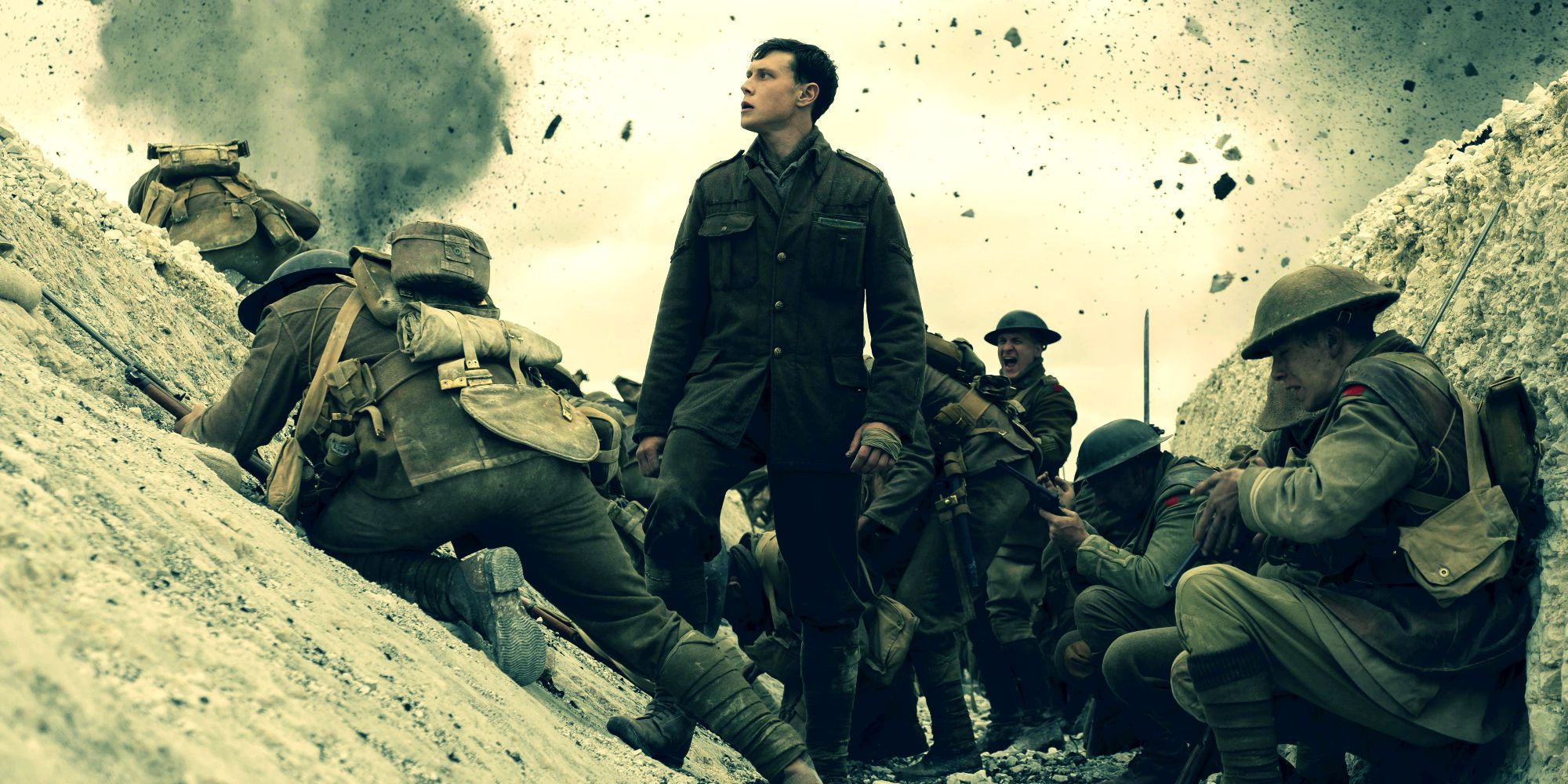Warning: This article contains SPOILERS for 1917.
On top of taking the top two prizes at the Golden Globes last week, the marketing campaign for Sam Mendes’ World War I epic 1917 has relied largely on the film’s astounding technical achievements. But while it is certainly visually impressive, 1917‘s “one-shot” approach really isn’t as smooth as it’s made out to be. Helmed by the former Skyfall and Road to Perdition director, 1917 bolsters an impressive cast and crew. Starring young unknowns George MacKay and Dean-Charles Chapman, the film also includes cameo appearances from British actors Colin Firth, Benedict Cumberbatch, and Mark Strong. Then, of course, there’s master cinematographer Roger Deakins to consider.
Click the button below to start this article in quick view.
Set during the height of the First World War, the film follows two British soldiers (MacKay and Chapman) as they embark on a harrowing journey across No Man’s Land. This remarkable effort, a 24 hour trek through enemy territory, is brought about when they learn that a fellow company nearby, under the impression that their impending attack will make a strong dent in the Germans’ war effort, is really walking into a trap. Their general (Firth) warns them that if they fail, the result will be nothing short of a massacre.
This heroic mission, one slightly based on the stories Mendes’ grandfather told him as a child, is captured and advertised on film as one seamless shot. Most of the time, the result is gorgeous and encompassing, allowing the meticulously crafted atmosphere to breathe and speak for itself as to the horrors of wartime. But other times, the film’s cuts are repetitive and distractingly noticeable, often relying on the same visual cues to crossover into the next shot.
As persuasive as it may look, a “one-shot” production is practically impossible to achieve, especially when having to consider and articulate the brutal nature of battle. Watching 1917, audiences will find that the cuts consistently coincide with the characters either walking into a dark room, or with the camera panning and the view being taken over completely by an object or person. While accomplishing this extensive one-shot look throughout a feature is no small feat, when put into conversation with other films that have done the same thing – especially the 2015 Best Picture winner Birdman or (The Unexpected Virtue of Ignorance) - the gimmick feels as if it cheats at times.
It’s also worth mentioning that one of the most tense scenes in the film actually breaks apart 1917‘s “one-shot.” Towards the climax of the movie, Schofield (MacKay) engages in a gunfight with a German scout across a town torn apart by the war. After tagging his opponent and infiltrating the home in which the German was shooting, Schofield makes his way up the stairs to confirm the kill. As he opens the door with his rifle, the camera reveals that the German has not yet died, and just as Schofield finishes the job, the enemy fires back, sending Schofield back down the steps and falling right on his back. The British soldier loses his consciousness and in doing so, the camera cuts to black. By the time Mendes‘ hero wakes up, the day has turned into night, and the seamless timeline of 1917 is finally broken.

